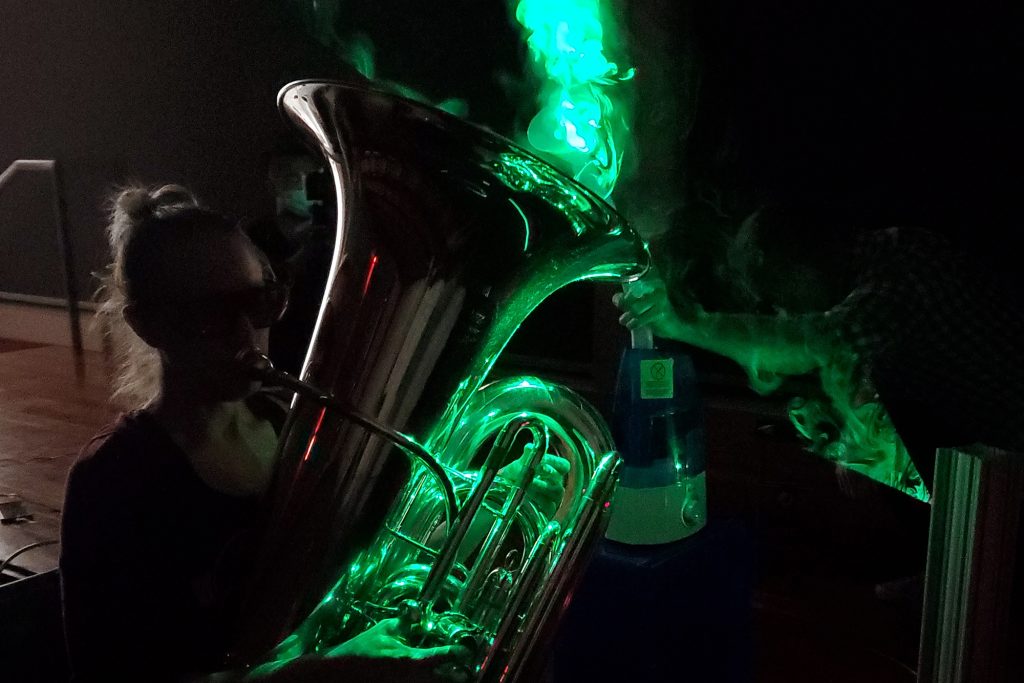
It has now been a year since The Philadelphia Orchestra played as a full ensemble in its 2,500 seat Verizon Hall. Outdoor, socially distanced performances and virtual concerts have had to suffice during the pandemic, but nothing can quite compare to musicians playing shoulder-to-shoulder, who can hear and see one another without plexiglass barriers in the way.
Of course, for the woodwind and brass musicians in the Orchestra, the very nature of their music necessitated such precautions, in case virus-laden droplets of their breath should exit their instruments and infect their colleagues.
To answer the questions of if and how their musicians could play together safely, The Philadelphia Orchestra reached out to P.J. Brennan, the University of Pennsylvania Health System’s Chief Medical Officer. Paulo Arratia, professor in the departments of Mechanical Engineering and Applied Mechanics (MEAM) and Chemical and Biomolecular Engineering, and Douglas Jerolmack, professor in the Department of Earth and Environmental Science in the School of Arts & Science who has a secondary appointment in MEAM, were soon brought into the collaboration to investigate the dynamics that govern the path of aerosolized droplets as they leave an instrument.
They brought lasers, high-speed camera, a drug store humidifier and some of the world’s best classical musicians into a Penn Engineering auditorium to find out exactly how those droplets travel.
“This project was born out of, ‘How can we help keep at least some joy alive during this time?’” Arratia says. “Doug and I are experimentalists, so figuring this out was something we could do.”
They started by looking through the emerging COVID-related literature on music-making and aerosol production, as well as pre-COVID studies done on the subject.
“At that point in the summer and early fall, there were already studies coming from Europe, particularly in Berlin, in which they had been able to play masked and with social distancing, though there was no audience,” says Arratia. There were also a limited number of studies of school bands documenting transmission—or lack thereof—“but there wasn’t much in terms of why the precautionary measures were working or not working,” he says.
Read more about Arratia and Jerolmack’s experiments and see a video of them in action at Penn Today: “Playing Safe,” by Katherine Unger Baillie.
